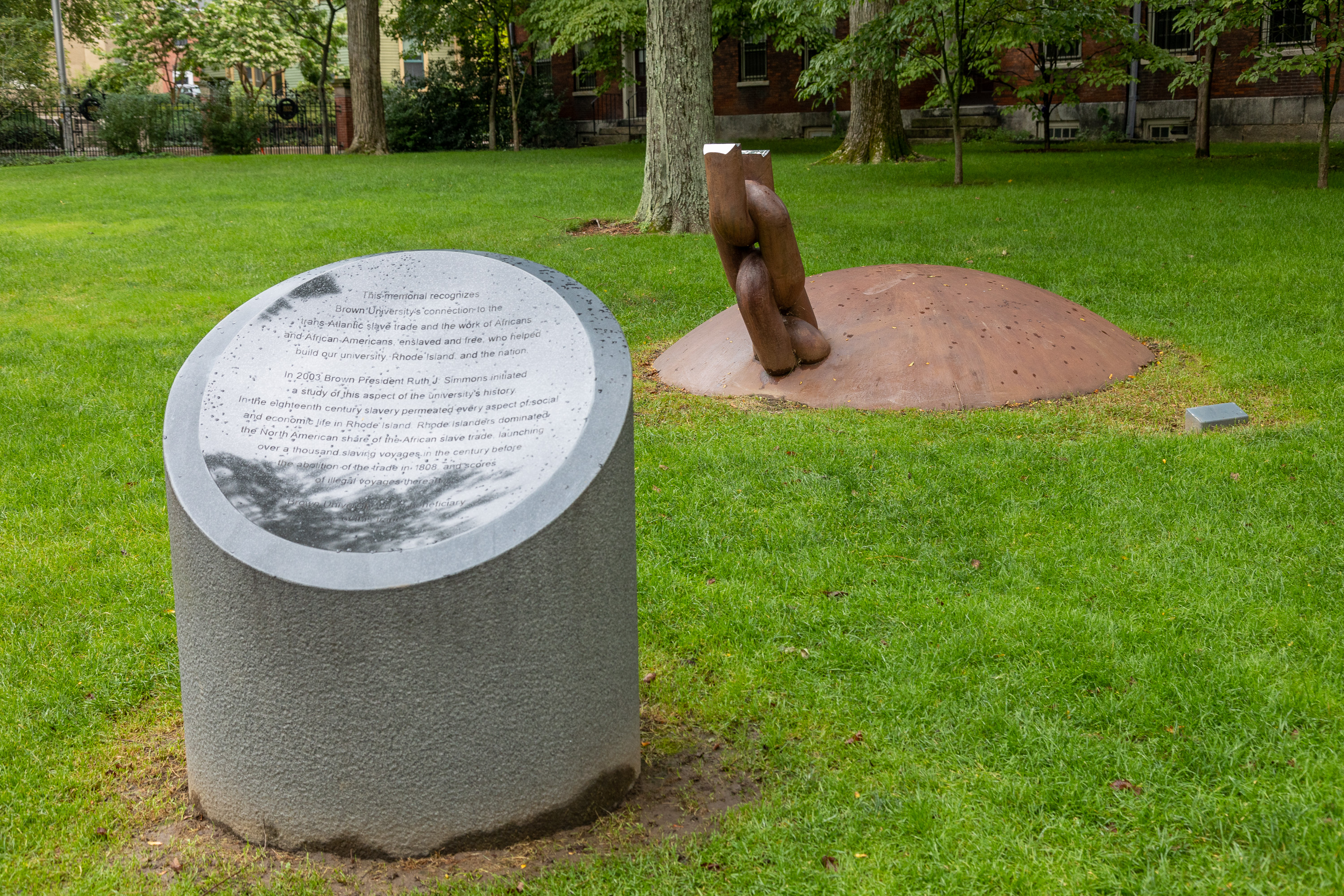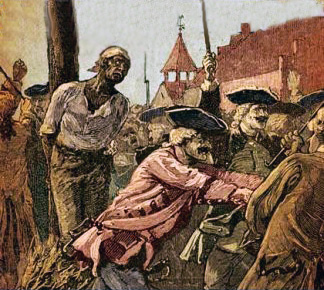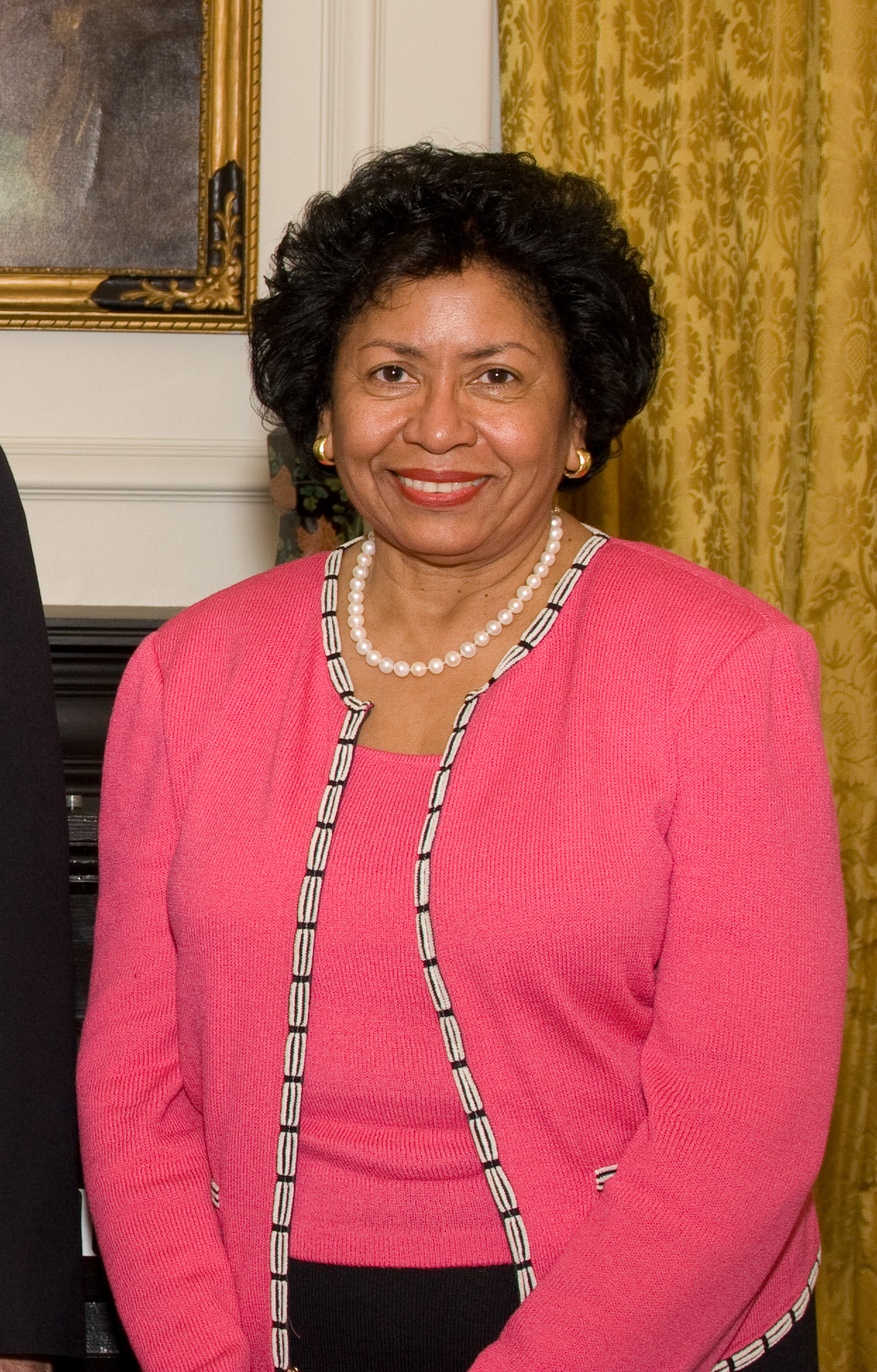|
Slavery Memorial (Brown University)
The ''Slavery Memorial'' is a sculptural memorial on the campus of Brown University that recognizes the institution's 18th century connections to chattel slavery and the transatlantic slave trade. Designed by sculptor Martin Puryear and dedicated in 2014, the memorial stands on the university's Front Green, adjacent to University Hall. Description Constructed of ductile cast iron, the ''Slavery Memorial'' depicts a cast-iron ball and chain partially buried underground; the third link of the chain is broken in two. A granite plaque in front of the memorial reads: History In 2003, then-university president Ruth Simmons launched a steering committee to research Brown's 18th century ties to slavery. In October 2006, the committee released a report documenting its findings. The university established a commission in July of the following year to consider how best to fulfill the report's recommendation of creating a "living site of memory." The commission studied a number of ex ... [...More Info...] [...Related Items...] OR: [Wikipedia] [Google] [Baidu] |
Martin Puryear
Martin L. Puryear (born May 23, 1941) is an American artist known for his devotion to traditional craft. Working in wood and bronze, among other media, his reductive technique and meditative approach challenge the physical and poetic boundaries of his materials.Shearer, Linda. ''Young American Artists 1978 Exxon National Exhibition''. New York: The Solomon Guggenheim Museum, 1978 The artist's Martin Puryear: Liberty/Libertà' exhibition represented the United States at the 2019 Venice Biennale. Life Born in 1941 in Washington, D.C., Martin Puryear began exploring traditional craft methods in his youth, making tools, boats, musical instruments, and furniture. After receiving a BA in Fine Art from the Catholic University of America in 1963, Puryear spent two years as a Peace Corps volunteer in Sierra Leone where he learned local woodworking techniques.Elderfield, John, and Michael Auping, ''Martin Puryear''. New York: The Museum of Modern Art, 2007 From 1966–1968, he studied a ... [...More Info...] [...Related Items...] OR: [Wikipedia] [Google] [Baidu] |
Memorial To The Abolition Of Slavery
The Memorial to the Abolition of Slavery () is a memorial on the in Nantes, France. The site memorializes the victims of Nantes' active role in the slave trade. The memorial, the largest such site in the world, was dedicated on March 25, 2012. Description The memorial was designed by Argentine–American Architect Julian Bonder and Polish artist Krzysztof Wodiczko. The memorial begins with a path along the Loire river banks, between the Anne-de-Bretagne Bridge and the Victor-Schoelcher footbridge. The path is covered in 2,000 spaced glass inserts, with 1,710 of them commemorating the names of slave ships and their port dates in Nantes. The other 290 inserts name ports in Africa, the Americas, and the area around the Indian Ocean. The path and surrounding 1.73-acre park lead to the under-the-docks part of the memorial which opens with a staircase, leading visitors underground closer to the water level of the river, which can be seen through the gaps between the support pil ... [...More Info...] [...Related Items...] OR: [Wikipedia] [Google] [Baidu] |
Monuments And Memorials To Victims Of Slavery In The United States
A monument is a type of structure that was explicitly created to commemorate a person or event, or which has become relevant to a social group as a part of their remembrance of historic times or cultural heritage, due to its artistic, historical, political, technical or architectural importance. Some of the first monuments were dolmens or menhirs, megalithic constructions built for religious or funerary purposes. Examples of monuments include statues, (war) memorials, historical buildings, archaeological sites, and cultural assets. If there is a public interest in its preservation, a monument can for example be listed as a UNESCO World Heritage Site. Etymology It is believed that the origin of the word "monument" comes from the Greek ''mnemosynon'' and the Latin ''moneo'', ''monere'', which means 'to remind', 'to advise' or 'to warn', however, it is also believed that the word monument originates from an Albanian word 'mani men' which in Albanian language means 'rememb ... [...More Info...] [...Related Items...] OR: [Wikipedia] [Google] [Baidu] |
Slavery At American Colleges And Universities
The role of slavery at American colleges and universities has been a focus of historical investigation and controversy. Enslaved Africans labored to build institutions of higher learning in the United States, and the slave economy was involved in funding many universities. People, forced to labor and seen as less than human, were used to build academic buildings and residential halls. Though slavery has long been presented as a uniquely Southern institution, colleges and universities in Northern states benefited from the labor of slaves. The economics of slavery brought some slave owners great wealth, enabling them to become major donors to fledgling colleges. Many colleges founded in states with legalized slavery utilized enslaved people and benefited from the slavocracy. Slaves were also sold by university administrators to generate capital. In some parts of the nation it was also not uncommon for wealthy students to bring an enslaved person with them to college. Ending almost 2 ... [...More Info...] [...Related Items...] OR: [Wikipedia] [Google] [Baidu] |
Memorial To Enslaved Laborers
The Memorial to Enslaved Laborers is a memorial in honor of those enslaved African Americans who built and worked at the University of Virginia, in Charlottesville, Virginia. Description The memorial is located near the University of Virginia Corner, east of Brooks Hall and the Rotunda, and consists of a wall of local "Virginia Mist" granite, in the shape of a broken ring, to symbolize broken shackles and completion. The ring is about in diameter, echoing the dimensions of Jefferson’s iconic Rotunda. Inside it is a second, concentric ring, with a timeline of slavery at the University. The grassy interior of the rings will be used as a gathering place. Inside the rings, distant conversations are audible. On the ring, large enough for the names of the 4,000–some enslaved people known to have worked on what is today the university grounds, are engraved the names that are known—578, as of 2020. Another 311 are known by their first name only, their job, or their relation to ... [...More Info...] [...Related Items...] OR: [Wikipedia] [Google] [Baidu] |
List Of Brown University Statues
The following is a list of permanent statues and sculptures on the Brown University campus. They are ordered by their date of creation. 1906–1950 ''Caesar Augustus'' (1906) The Caesar Augustus statue stands in front of the Sharpe Refectory in Hughes Court. It was a gift to the university by Moses Brown Ives Goddard in 1906. It is an exact bronze copy of the Vatican Museum's classic Augustus of Prima Porta statue. The statue's arm broke off due to a hurricane that struck Providence in 1938. A replacement arm was subsequently stolen by students, its whereabouts unknown. It was originally located in front of Rhode Island Hall on the Quiet Green, until it was moved to its current location in front of Sharpe Refectory 1952. The pedestal reads "The Gift of Moses Brown Ives Goddard to Brown University." In 2020, Brown's Public Art Committee proposed to restore the statue and relocate it to the Quiet Green, with the intention of putting it into conversation with the Slavery Memori ... [...More Info...] [...Related Items...] OR: [Wikipedia] [Google] [Baidu] |
Christina Paxson
Christina Hull Paxson (born February 6, 1960) is an American economist and public health expert serving as the 19th president of Brown University. Previously, she was the Hughes Rogers Professor of Economics & Public Affairs at Princeton University as well as the dean of Princeton School of Public and International Affairs. In March 2012, Paxson was selected as the 19th president of Brown University. She officially succeeded Ruth Simmons on July 1, 2012, and was inaugurated on October 27, 2012. Early life and education After spending her childhood in Forest Hills, a suburb of Pittsburgh, Pennsylvania, Paxson received her B.A. from Swarthmore College in 1982, where she majored in economics and minored in English and philosophy as a member of the Phi Beta Kappa Society. Originally a graduate student at Columbia University's Business School, Paxson transferred to Columbia's Graduate School of Arts and Sciences, receiving her M.A. and Ph.D. in economics, in 1985 and 1987, res ... [...More Info...] [...Related Items...] OR: [Wikipedia] [Google] [Baidu] |
Jewelry District (Providence)
The Jewelry District is a neighborhood of Providence, Rhode Island located just southeast of Downtown. The historical path of Interstate 195 delineates the neighborhood's northern border while Interstate 95 and the Providence River define its western, southern and eastern edges. Beginning in the 19th century, the area became a center of jewelry manufacturing. In the 1960s, the area was detached from the rest of Downtown with the construction of Interstate 195. A major construction project completed in 2013 relocated Interstate 195 further south, reconnecting the district with Downtown Providence and freeing 19 buildable acres of land. Contained within the Jewelry District neighborhood is the Providence Jewelry Manufacturing Historic District, added to the National Register of Historic Places in 1985 and expanded in 2012. History During 19th and 20th centuries, the manufacturing of jewelry and costume jewelry emerged as a dominant local industry. Jewelry manufacturing began ... [...More Info...] [...Related Items...] OR: [Wikipedia] [Google] [Baidu] |
African Burial Ground National Monument
African Burial Ground National Monument is a monument at Duane Street and African Burial Ground Way (Elk Street) in the Civic Center section of Lower Manhattan, New York City. Its main building is the Ted Weiss Federal Building at 290 Broadway. The site contains the remains of more than 419 Africans buried during the late 17th and 18th centuries in a portion of what was the largest colonial-era cemetery for people of African descent, some free, most enslaved. Historians estimate there may have been as many as 10,000–20,000 burials in what was called the Negroes Burial Ground in the 18th century. The five to six acre site's excavation and study was called "the most important historic urban archaeological project in the United States." The Burial Ground site is New York's earliest known African-American cemetery; studies show an estimated 15,000 African American people were buried here. The discovery highlighted the forgotten history of enslaved Africans in colonial and feder ... [...More Info...] [...Related Items...] OR: [Wikipedia] [Google] [Baidu] |
Brown University
Brown University is a private research university in Providence, Rhode Island. Brown is the seventh-oldest institution of higher education in the United States, founded in 1764 as the College in the English Colony of Rhode Island and Providence Plantations. Brown is one of nine colonial colleges chartered before the American Revolution. Admissions at Brown is among the most selective in the United States. In 2022, the university reported a first year acceptance rate of 5%. It is a member of the Ivy League. Brown was the first college in the United States to codify in its charter that admission and instruction of students was to be equal regardless of their religious affiliation. The university is home to the oldest applied mathematics program in the United States, the oldest engineering program in the Ivy League, and the third-oldest medical program in New England. The university was one of the early doctoral-granting U.S. institutions in the late 19th century, adding masters ... [...More Info...] [...Related Items...] OR: [Wikipedia] [Google] [Baidu] |
Civil Rights Memorial
The Civil Rights Memorial is an American memorial in Montgomery, Alabama, created by Maya Lin. The names of 41 people are inscribed on the granite fountain as martyrs who were killed in the civil rights movement. The memorial is sponsored by the Southern Poverty Law Center. Design The names included in the memorial belong to those who were killed between 1955 and 1968. Those dates were chosen because in 1956 the U.S. Supreme Court ruled that racial segregation in schools was unlawful and 1968 is the year of the assassination of Martin Luther King Jr. The monument was created by Maya Lin, who is best known for creating the Vietnam Veterans Memorial in Washington, D.C. The Civil Rights Memorial was dedicated in 1989. The concept of Lin's design is based on the soothing and healing effect of water. It was inspired by a passage from King's "I Have a Dream" speech "...we will not be satisfied "until justice rolls down like waters and righteousness like a mighty stream..." The qu ... [...More Info...] [...Related Items...] OR: [Wikipedia] [Google] [Baidu] |
Ruth Simmons
Ruth Simmons (born Ruth Jean Stubblefield, July 3, 1945) is an American professor and academic administrator. She is president of Prairie View A&M University, a historically black university. Simmons previously served as the 18th president of Brown University from 2001 to 2012, where she was the first African American president of an Ivy League institution. Prior to Brown University, she headed Smith College, one of the Seven Sisters and the largest women's college in the United States, beginning in 1995. In 2017, she was called out of retirement and named the eighth president of Prairie View A&M University in her home state of Texas. On March 11, 2022, she announced that she would step down as president when the university names her successor. She will continue serving at Prairie View A&M University in other capacities. Simmons is a fellow of the American Academy of Arts and Sciences, the American Philosophical Society, and an honorary fellow of Selwyn College, Cambridge. Earl ... [...More Info...] [...Related Items...] OR: [Wikipedia] [Google] [Baidu] |



.jpg)



